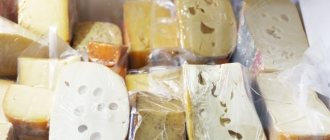It is impossible to pinpoint the exact moment when tulip bulbs are ready for digging. Important factors in this process include the planting region, the condition of the soil, and the weather conditions to which the plants were exposed. The plant itself can tell you the right time to remove the bulbs from the ground.
The main sign that the bulbs are ready for digging is the general appearance of the leaves, in particular their color. If the plant has withered and turned yellow, this indicates that all the nutrients collected by the plant have already passed to the root and can be safely dug up.
Also, to make sure that the bulbs are ready for digging, just take the stem in your hand and begin to carefully wrap it around your finger. If you can do this without kinks or sounds characteristic of damage, then the bulbs can be removed from the ground.
TIP: If you dig up a plant too early, it may not have time to transfer all the nutrients, which will affect the growth of the plant in the next season; digging up tulips later than expected, there is a risk that the plant will not have time to rest before subsequent planting.
When removing bulbs from the ground, you should not use a shovel or try to pull them out by the stem; a small rake is perfect for loosening the soil. If possible, tulips are dug up in dry weather; this makes it easier to clean the bulbs from the ground and will help avoid damage. It is necessary to separate the stems from the tubers after digging up the plants.
Bulbs that have reached a diameter of 4 centimeters are considered good specimens; such specimens usually tolerate storage calmly, even with minor violations of conditions.
Experienced gardeners have identified several ways to properly store tulip bulbs before planting.
How to Preserve Tulip Bulbs in Winter
After the bulbs are cleared of soil, scales and dried roots, and the fused nucleoli are separated, it is necessary to carry out culling, which consists of screening out weak, diseased or damaged specimens. After selecting suitable bulbs, it is necessary to place them for drying in a dark, ventilated area and limit the access of insects to the tubers. If some bulbs cause mixed impressions regarding suitability, they are placed separately. It is worth remembering that only mature plants that have reached at least 3 years of age can survive wintering, so experienced gardeners strongly recommend returning the tubers back to the ground in the fall, without leaving them for winter storage.
When to dig up tulip bulbs
When does this “due date” arrive? Experienced gardeners focus on the color and condition of the leaves. As soon as the tulip leaves begin to fade, you need to prepare for the digging process: prepare the container and storage room. And when the foliage has turned two-thirds yellow, it’s time to dig up the bulbs. It was at this moment that the tulip bulbs have ripened, but the babies have not yet fallen off. Thus, in addition to the natural preservation of the bulbs, we also receive excellent seed material that we grew ourselves. The approximately ideal time for digging and drying in central Russia is the period from the second ten days of June to mid-July. In Siberia, the right time comes a little later - from the beginning to the end of July.
Due to the fact that different regions have different climatic conditions, there is no exact date for starting the digging of these spring flowers. Avid flower growers pay great attention not only to the condition of the foliage, but also to the belonging of tulips to a particular variety, flowering time and climate characteristics.
Attention! Tulips that bloom later need to be dug up much later than early flowering plants. Both early and late digging are equally harmful to the bulbs.
Even a slight delay is fraught with the following consequences:
- There is a high probability that the bulbs will simply rot in the ground or become infected due to excess moisture.
- Even in two weeks, the children will grow considerably and separate from the main bulb. It will be very difficult to collect them, and the precious seed material will be lost in the soil.
- A month and a half after flowering, the tulip bulbs begin to go deeper. At this time, you can easily damage them or not find them at all.
- In late spring and early summer, as you know, all insects become active. Actively reproducing, they pose a great danger to tulips. For example, the larvae of the cockchafer are very fond of bulbs, but as food, causing irreparable damage to the flowers.
Digging too early also does not bode well. The bulbs will not have time to ripen and the flowers next year will most likely be small and weak.
Important! Many varieties of tulips are very picky about the timing of digging and storage conditions.
If you are the happy owner of rare, exclusive varieties, then you need to approach this process more scrupulously and not rely on Russian luck.
A ripe bulb dug up in time should have golden-brown outer scales.
Conditions required for proper storage
Treat tulip bulbs with a solution of potassium permanganate, dipping them for half an hour in a pink solution, in addition to protecting them from fungus and diseases, this treatment will serve as a kind of vitamin “bath”. After processing, the bulbs need to be allowed to dry. If manganese is not available, you can use wood ash, thoroughly sprinkling the tubers with it before storing.
Divide the tubers by variety and label them; the bulbs of different varieties are very similar to each other, before the next planting it will be impossible to distinguish them.
Choose a dry (a room with a humidity of about 60% is ideal) and a ventilated room, with a temperature not exceeding 15 degrees. If there are significant deviations from optimal conditions, the tubers may begin to germinate untimely or freeze.
Select a suitable container and fill it with filler; sand, peat or regular sawdust are perfect for this, then spread the tubers evenly, after wrapping them in paper; it is advisable to leave some distance between them; if one bulb is infected, this will help protect the others. Do not use as containers, containers that do not withstand contact with moisture, such as cardboard or wooden boxes.
During wintering, it is important to control the humidity of the room; if a characteristic smell of mold appears, the bulbs will need to be sorted, destroying spoiled specimens, and the room should be ventilated to reduce the humidity level.
ADVICE. Immediately before planting, it is recommended to increase the level of air humidity as much as possible, which will serve as a kind of transition period for tulips and make the next season easier for them.
Suitable conditions
In the first month after digging out of the soil, flower buds form. Therefore, during this period, planting material is kept at a temperature of +24 degrees. Then this indicator is lowered to +20, and by the time of autumn planting to +17.
The optimal humidity should be no higher than 70%. To comply with physiological processes, the bulbs must be kept without light. Only low and diffuse lighting is allowed.
You cannot keep tulip planting material at home at temperatures exceeding +30 degrees. Otherwise, the flower buds are damaged, the flowers become dehydrated and die.
Premises requirements
Before planting, you need to keep the tulip seed in a cool room. It is quite difficult to create such a microclimate in a city apartment. The basement or attic of a house, as well as a barn, are suitable for this purpose. This should be a dry place with good ventilation, but without access to light.
It is important to protect the seed from rodents if the storage location is chosen in the basement or attic of a private home. To do this, you need to first poison the mice and rats or put the tulips in old nylon stockings or mesh and hang them from the ceiling. This way, all conditions will be met, and rodents will not get to the desired bulbs.
Many people believe that tulips can be kept in the vegetable drawer in the refrigerator. This opinion is wrong. It is correct to store the material for sowing at elevated temperatures for the first two months, and then gradually reduce it. It is impossible to create such conditions in a regular refrigerator, so the seed material will inevitably be spoiled.
Requirements for containers
In order to preserve tulips well, containers must meet the requirements for size and material. Before planting in the ground, it is important to provide free air access to the bulbs.
Tips for proper storage:
- It is recommended to keep planting material in boxes made of boards;
- it should lie in one layer;
- to protect it from moisture, the seed must be sprinkled with sawdust;
- To protect against damage, it is necessary to wrap the bulbs individually in newspapers.
Do not place bulbs in polyethylene bags, plastic buckets and basins, or cardboard boxes. In closed containers, they quickly become overgrown with mold and begin to rot, and pathogenic bacteria and fungal infections accumulate on the cardboard.
How to properly store tulip tubers in the summer
Preserving tulip bulbs until autumn is much easier than until spring and requires fewer conditions. How to prepare the bulbs for storage, according to the instructions - written above. After preparation, you need to choose a dry, ventilated room that can protect the bulbs from direct sunlight. The temperature in the storage should be maintained in the range of 22 to 28 degrees and gradually decrease as autumn approaches, which will help the tubers adapt.
The tubers should be checked at least once every two weeks; if they begin to wrinkle, it means the humidity in the room needs to be slightly increased. If there is a smell of mold, then you need to sort through all the tubers, discard the rotten ones, and check the storage to reduce air humidity. Neglecting the level of humidity can cause disturbances in gas exchange in the bulbs, which will negatively affect the plants in the future.
For storage, it is recommended to choose containers that allow through ventilation of the tubers; plastic fruit boxes, wooden plank boxes are suitable; egg cartons are an excellent choice. You should not lay out the tubers in more than 3 layers, this may violate the storage conditions of the tubers that will end up on the bottom.
TIP: Do not cover the bulbs to retain heat, this will interfere with air ventilation in the container.
Storage until spring
When it is not possible to plant tulip bulbs in autumn or in case of late acquisition of seed, conditions are provided for long-term storage of flowers until spring using early forcing:
- Having prepared the soil mixture for bulbs in advance, the seed is planted in boxes in the fall. The thickness of the soil layer in such a container should be 40 cm or more. The distance between individual copies is 5 cm.
- Containers with planted tulip bulbs are sent to the basement, where the air temperature is kept in the range from +3 to +5 degrees. Violation of these boundaries leads to freezing of the material or too rapid germination.
- Future flowers are briefly inspected weekly. If necessary, moisten the soil, but do not allow the soil to flood. Excess moisture causes flowers to rot.
- The first shoots appear in late February or early March.
- With the final establishment of warm weather, containers with plants are taken outside, where after a while flowers bloom on them.
In spring, tulips cannot be transplanted from boxes into open ground. During the winter, the plants will already have time to form a strong root system. An attempt to replant them will inevitably damage the underground part. Then, even if the plant develops well, flowers will not appear this year.
Where to properly store tulip bulbs at home
Preserving bulbs at home seems to be a non-trivial task, so you should try to plant them in the ground in the fall. If there is no opportunity to plant bulbs in the fall, then good storage options in the apartment can be:
- Glazed balcony. Provided that the temperature is maintained at 7–8 degrees and it is possible to maintain optimal air humidity and shade.
- Fridge. If you have a small number of tubers, you can use the vegetable compartment of the refrigerator for storage, but you should make sure that the temperature there does not drop below 3-4 degrees. For better preservation, the bulbs are stored in a paper bag with ventilation holes. Only sufficiently mature plants, 3–4 years old, can withstand home storage. The best storage option may be an old refrigerator, in which the temperature is set as high as possible; this will help to better preserve the tubers without putting the food at risk. The container in which the bulbs are stored should not touch the walls of the refrigerator.
- Cold water supply pipe – having a small amount of material to store, you can organize storage in a shaded area in close proximity to the cold water supply pipe, after checking the humidity level and protection from pets. This method is quite risky and should only be used if all other options are unavailable.
If the bulbs begin to sprout during storage, they need to be sent for forcing early flowers.
Storage features in summer and autumn
During the hot season, it is rarely possible to keep a bouquet fresh for a long time. The warmer and brighter the room, the faster freshly cut flowers will wilt.
Storage of cut tulips
High temperature and bright lighting accelerate life processes, activating stem growth, blossoming and subsequent wilting of the bud. Immersion in ice water helps restore flowers that have withered in warm weather to their original appearance. The plants are wrapped in paper and soaked for 1-2 hours.
The optimal temperature regime, which extends the shelf life of flower crops at home by an additional 5-7 days, is no higher than 5°C without direct sunlight.
If you managed to dig up the tulips, preserving the bulbs, you can prolong their flowering until autumn by placing them, along with the root tubers, directly in water, moistened moss or turf soil.
How to store tulip bulbs in the cellar
The cellar is one of the most affordable ways to store tulip bulbs, which is available to most gardeners. Subject to the conditions, it allows you to store tulip bulbs both in the summer and preserve them in the winter season. To preserve tubers in the cellar, you must ensure the following:
- The cellar maintains a comfortable humidity level for tulips, in the range of 60–80%; it is not flooded by groundwater and does not freeze in the winter season.
- The room is isolated from small pests, such as rats, which can both harm the planting created for the bulbs and destroy the tubers themselves.
- It is necessary to periodically check the condition of the tulip bulbs and monitor the air humidity in the room.
- The storage container is prepared according to the recommendations.
Optimal storage temperature
The ambient temperature should be from + 23 to + 25 ° C, humidity – 60–65%. Too dry air causes the bulbs to shrink, and in a more humid environment they are more likely to rot.
Can tulip bulbs be stored in the refrigerator?
The refrigerator is not the best place to store tulips. Not everyone can withstand the temperature of + 4 ° C, which is kept inside the refrigerator compartment. Only some varieties of tulips can be stored on the bottom shelf of the refrigerator, but it is better to find a place for them with a temperature of at least + 15 ° C.
Other ways to preserve tulip bulbs
Forcing early flowers
Fill the flower pots with the prepared soil, then plant the tulip bulbs in them as closely as possible to each other; they need to be deepened into the ground so that the bulb neck remains above the surface of the soil.
After which the pot is closed with a black plastic bag and placed on the bottom shelf of the refrigerator. The tubers wake up and take root for about 3–4 months, after which they are placed on the windowsill, so the tulip flowers grow by March. We recommend:
How to store vegetables in the refrigerator correctly
If the tulips are able to open, the bulbs are not planted in the garden, but after waiting for the above-ground part to turn yellow, it is cut off, prepared for storage and left until autumn at room temperature.
Wet storage
The filler into which the tulip bulbs will be dipped is pre-moistened with water with the addition of potassium permanganate (1 tablespoon per liter of water), this helps to avoid the spread of fungal infections on the tubers.
When choosing containers for storage, you should avoid wooden and cardboard containers, which quickly begin to mold when in contact with moisture.
The bulbs should be immersed 3–5 cm, then cover the container with an opaque film or bag.
The disadvantage of this storage method is the need for constant monitoring of the filler. If the filler dries out, it is additionally moistened with water, and if the smell of mold appears, the bulbs are ventilated for 24–48 hours, having previously destroyed the damaged specimens. The best option would be to replace the filler every 40 days.
With this type of storage, tulips practically do not rest; they should be planted in the ground at the first opportunity.
Deep saving
This method is a little radical and is similar in its system to preserving rose rhizomes. It will require large flower pots and soil. The bulbs are planted in the ground to a depth of 10–15 cm, the top of the soil is covered with spunbond, preferably black, after which sawdust is poured on top and taken out into the fresh air.
When stored in this way, tulips develop their root system well and withstand the winter well; they are not dug out of the pots before planting, but go straight into the ground.
Why dig up tulip bulbs every year?
Do you really need to dig up tulip bulbs every year? Many will tell you: “No.” In fact, there is no clear answer. And this circumstance depends only on the variety of tulips.
Simple garden flowers are replanted every five or even seven years, considering that there is no need to waste time and effort, they bloom beautifully every autumn. Some varieties require more careful care and are very picky about the timing of digging and planting. And there are also those that cannot be dug up and replanted for two to three years. In any case, information about storage periods and rules will not be superfluous.
Important! On the 3-4th day after the tulips begin to bloom or immediately after the end, professionals advise cutting off the flower stalks for better ripening of the bulbs and the formation of the flower arrow.
Here are just a few reasons why you should dig up tulip bulbs after flowering and store them for short-term storage:
- For lush flowering in spring, it is necessary to create a certain storage regime for tulip bulbs. At this moment, the foundation for the future flower is laid in them - a flower arrow is formed. Mature bulbs should be stored strictly at a temperature of +25˚C, no more, no less. Being deep underground, the bulb does not receive the necessary heat.
- All flowers of the bulbous family have one feature - every year they go deeper into the ground. The deeper they go into the ground, the more difficult it is for weak and tender shoots to break through the soil in the spring. After all, over time, this layer of soil only increases. As a result, the tulip bulbs will simply rot in the ground, not even leaving children for subsequent reproduction. An empty flowerbed is a rather sad sight. Especially in spring, when you really want to see the first colorful flowers.
- Earth. Even the most picky flowers take from the ground everything they need for growth and flowering. Therefore, over time, the soil becomes poor, compacted and becomes unsuitable for plants. This circumstance affects the appearance of flowers, their resistance to diseases and the preservation of varietal characteristics. In the process of digging and planting tubers, you can not only loosen the compacted soil, but also fertilize it with organic and inorganic additives, adding the necessary vitamins to the flowers’ diet.
- If you want to preserve the varietal characteristics of tulips, and also get a large number of children from them, then digging up tulips after flowering and planting them in the fall is simply necessary. Within a couple of months after flowering has ended, it will be difficult to select high-quality seed for subsequent plantings. And if the process of digging up tulip bulbs is excluded, the children will become smaller. Yes, and collecting small onions will be very difficult.
- Humidity during storage is an important factor. For example, if tulips grow in a flowerbed next to other flowers, you will inevitably water them. This way you can destroy the tulip bulbs. After all, during the dormant period, moisture for them is tantamount to a death sentence. Not only do the bulbs begin to rot, they are affected by various diseases, transmitting them to each other in the ground. By digging up and sorting the seed in a timely manner, you can avoid such consequences and rejoice in the spring, looking at tulips that are ideal in shape and color.
- By not separating excess small bulbs from mature ones during the process of digging and sorting, you create an acute shortage of minerals and nutrients necessary for normal plant growth and flowering.
As you can see, there are many reasons to dig up and properly store tulip bulbs at the right time.
Why dig up tulips and how to do it correctly is described in the following video:
Preservation of damaged bulbs
If the bulbs have been damaged by infection, and there is no desire to throw away the damaged tubers, then you can try to save them by carefully cutting out the damaged areas with a sharp knife. The resulting sections are treated with ash, sulfur or a solution of potassium permanganate, after which the reanimated tubers are sent to be stored separately from healthy specimens.
In this way, only slightly damaged bulbs can be saved; if the infection covers a significant area of the tuber, then it will no longer be possible to save it.
Conclusion
Which option to choose is up to the gardener to decide, but it’s worth remembering the basic storage rules:
- keep tulip bulbs at a temperature not lower than 17°, but not higher than 25°C;
- air humidity should not exceed 70%;
- do not use cardboard boxes;
- For storage, use a dry and well-ventilated area.
- If you store the bulbs correctly, in the spring they will delight you with bright flowers and large buds.
Currently reading:
- How to grow Chinese cabbage in open ground
- Using hydrogel in open ground for plants
- Planting to decorate the site with three types of coniferous trees
- Increased potato yield using Dutch technology
Share the news on social networks
About the author: Victoria Semyonovna Nakhodkina
Leading researcher at the laboratory of vegetable and berry crops, Yakut Scientific Research Institute of Agriculture, Siberian Branch of the Russian Academy of Agricultural Sciences, Republic of Sakha (Yakutia).











